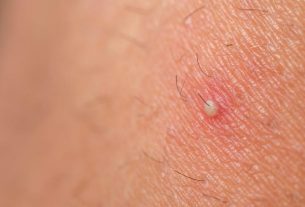Bulking is the first phase of the hypertrophy process, which consists of a 10 to 20% increase in calorie consumption, to facilitate weight and muscle mass gain. This process is mainly practiced by bodybuilders and high-performance athletes.
After gaining weight through bulking, it is necessary to lose the excess body fat that was gained, this period being called cutting. Thus, bulking and cutting are strategies whose ultimate objective is to gain more muscle mass and definition, respectively. Understand better what cutting is.
Although bulking is mostly practiced by bodybuilders, it can also be done by those who practice physical activities, and it is recommended to follow the guidance of a nutritionist so that the eating plan is adequate, as well as a physical education professional so that the training is done correctly. .

How to bulk
In order to do bulking correctly, it is important to follow some guidelines:
- Consume 10 to 20% more calories in your dietsince the main objective is weight gain, it is then recommended to follow a high-calorie diet, with increased consumption of carbohydrates, proteins and healthy fats;
- Carry out bulking for the period indicated by the nutritionistwhich can be from 4 to 6 months, because if it is done for less or longer than recommended, there may not be the desired gain in muscle mass;
- Do training under the guidance of a physical education professionalaccording to the person’s objective and the period they are going through, and during this period it is normally recommended to carry out activities that increase muscle mass gain, such as bodybuilding, weight lifting and calisthenics.
It is common that as you gain weight, there is also an increase in the amount of fat in the body, and, therefore, monitoring by a nutritionist and physical education professional is essential to ensure that fat gain is minimal during this period. and for the cutting period to be more effective.
Diet menu for bulking
The following table contains an example of a 3-day bulking menu:
The types and quantities of foods on the menu vary depending on the type of bulking, gender and level of physical activity of each person. Therefore, it is recommended to consult a nutritionist so that a complete assessment can be carried out and a dietary plan can be created according to individual needs and objectives.
If you want to know how to follow a bulking diet, make an appointment with the nutritionist closest to you:
Taking care of your health has never been easier!
Main types of bulking
There are two main bulking strategies:
1. Bulking limpo
Clean bulking is one in which you should prioritize healthy foods, despite the amount of calories ingested being higher than what you are used to or what you spend daily. In this type of bulking, it is essential to be monitored by a nutritionist, as this way it is possible for the eating plan to be indicated according to the person’s characteristics and objectives, in addition to the fact that fat gain will be lower.
Furthermore, the nutritionist may also recommend the use of dietary supplements, such as creatine monohydrate, caffeine and whey protein, to enhance bulking and promote the next stage of hypertrophy, which is cutting. In this type of bulking, muscle mass gain happens in a healthier way and slowly and gradually.
2. Bulking sujo
In dirty bulking there is not much concern about what is consumed daily, favoring a greater consumption of carbohydrates and unhealthy fats, which leads to gains not only in muscle mass but also in fat.
Despite being unhealthy, muscle mass gain during dirty bulking is faster, making this strategy the most used by athletes.
Bulking e cutting
Bulking corresponds to the process that precedes cutting, that is, during the bulking period the person consumes more calories than they burn, as the objective is to gain weight to generate muscle mass, and, when they reach the objective, they move on to the cutting period, which corresponds to the period in which the diet is more restricted and physical activity is more intense with the aim of losing fat and gaining muscle definition.
Bulking and cutting are strategies adopted together and must be carried out under the guidance of a nutritionist and a physical education professional, to achieve the expected benefits, which are gains in muscle strength, hypertrophy and fat burning.
Furthermore, with bulking and cutting it is possible to obtain greater vascularity, which is valued in bodybuilding competitions, and greater concentrations of GH in the blood, which is the growth hormone and which is also related to muscle mass gain.
Bibliography
- GANSON, T, Kyle et al. “Bulking and cutting” among a national sample of Canadian adolescents and young adults. Eating and Weight Disorders – Studies on Anorexia, Bulimia and Obesity . Vol.27. 3759–3765, 2022
- LENZI, K, Jaqueline et al. Dietary Strategies of Modern Bodybuilders During Different Phases of the Competitive Cycle. The Journal os Strength and Conditioning Research. 1-6, 2020
- IRAKI, Juma et al. Nutrition Recommendations for Bodybuilders in the Off-Season: A Narrative Review. Sports. Vol 7. 7 ed; 2019

Sign up for our newsletter and stay up to date with exclusive news
that can transform your routine!
Warning: Undefined array key "title" in /home/storelat/public_html/wp-content/plugins/link-whisper-premium/templates/frontend/related-posts.php on line 12
Warning: Undefined array key "title_tag" in /home/storelat/public_html/wp-content/plugins/link-whisper-premium/templates/frontend/related-posts.php on line 13




